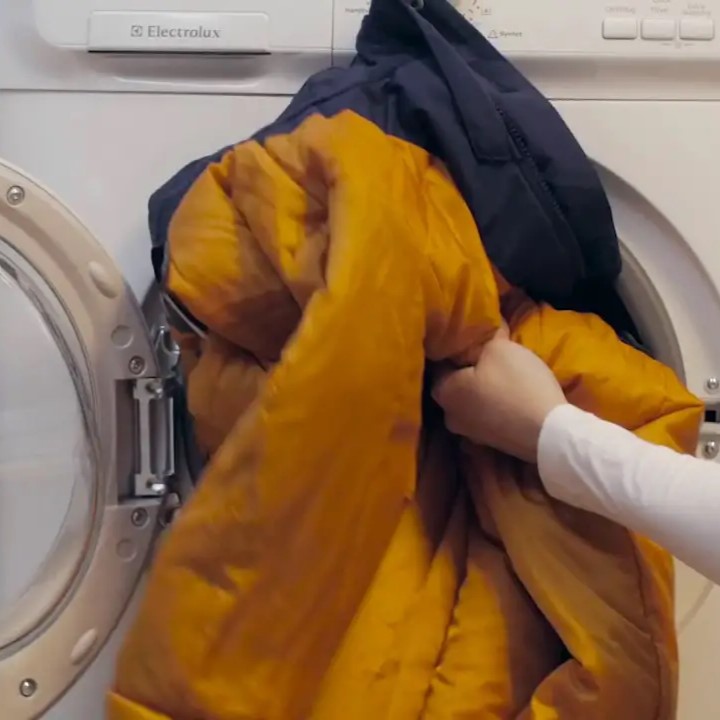Clothes Shrink in Dryer: Causes, Prevention, and Solutions
Introduction
Clothes shrinking in the dryer is a common household concern that affects everyone from casual wearers to fashion enthusiasts. Not only can it lead to discomfort and frustration, but it can also shorten the lifespan of your favorite garments. Understanding why clothes shrink in dryer is essential for maintaining your wardrobe’s integrity and ensuring your clothes fit just right. This article delves into the various factors that cause clothes to shrink in the dryer, offers practical prevention tips, and provides effective solutions to manage and reverse shrinkage.
 The Science Behind Fabric Shrinkage
The Science Behind Fabric Shrinkage
Understanding the fundamental reasons why clothes shrink in dryer requires a basic grasp of fabric science. Different materials respond differently to heat and moisture, which are primary contributors to shrinkage.
Natural Fibers vs. Synthetic Fibers
Natural fibers such as cotton, wool, and linen are more prone to shrinking compared to synthetic fibers like polyester and nylon. This is because natural fibers have a higher ability to absorb water and are more sensitive to heat. For instance, cotton fibers consist of cellulose, which can contract when exposed to high temperatures and moisture, leading to shrinkage.
In contrast, synthetic fibers are engineered to resist moisture absorption and retain their shape even under high heat conditions. Therefore, garments made from synthetic materials are less likely to shrink in the dryer, although they can still experience some degree of size change due to other factors like agitation.
The Role of Heat and Agitation
Heat is a significant factor in the shrinking process. When clothes are exposed to high temperatures in the dryer, the fibers relax and can contract, especially if they have been stretched during manufacturing or wear. Agitation, which occurs as clothes tumble and rub against each other, exacerbates this effect by increasing the friction and causing the fibers to compress and tighten.
Moreover, prolonged exposure to heat and constant movement accelerates the shrinkage process, making it crucial to monitor drying settings closely to prevent unwanted size reductions.
 Common Fabrics and Their Shrinkage Tendencies
Common Fabrics and Their Shrinkage Tendencies
Different fabrics react uniquely to drying conditions. Knowing which materials are prone to shrinking can help you take preventive measures effectively.
Cotton
Cotton is one of the most commonly used fabrics and is highly susceptible to shrinking in the dryer. This is especially true for garments that haven’t been pre-shrunk. High heat and extended drying times can significantly reduce the size of cotton clothes.
Wool
Wool fibers are naturally crimped and can shrink dramatically when exposed to heat and moisture. This process, known as felting, not only reduces the size of the garment but can also distort its shape, making it difficult to restore.
Linen
Linen is another natural fiber that is prone to shrinkage. While it doesn’t shrink as much as cotton or wool, high heat can cause it to lose its crispness and fit snugly against the body.
Synthetic Fibers
Materials like polyester, nylon, and spandex are more resistant to shrinking. However, they are not entirely immune. Overdrying synthetic fabrics can lead to minor shrinkage and a loss of elasticity, which affects the garment’s comfort and fit.
Top Causes of Clothes Shrinkage in Dryer
Several factors contribute to clothes shrinking in the dryer. Identifying these can help you mitigate the risk effectively.
Excessive Heat
One of the primary causes of shrinkage is excessive heat. High dryer temperatures cause fibers to contract, especially in natural fabrics. Ensuring that your dryer settings align with the fabric care labels can prevent unnecessary shrinkage.
Overdrying
Leaving clothes in the dryer for too long not only wastes energy but also increases the likelihood of shrinkage. Overdrying can strip moisture from fabrics, leading to tighter and smaller garments.
Improper Sorting
Drying heavy fabrics like towels or jeans with lighter clothes can cause uneven drying. The heavier items can transfer more heat and friction to the lighter garments, resulting in shrinkage.
Using High Heat Settings
Opting for high heat settings regardless of the fabric type can be detrimental. Delicate fabrics are particularly vulnerable to shrinkage when exposed to intense heat.
Lack of Fabric Care Knowledge
Not paying attention to or misunderstanding care labels can lead to improper drying practices. Different fabrics require specific drying methods, and ignorance can result in unintended shrinkage.
 How to Prevent Clothes from Shrinking in the Dryer
How to Prevent Clothes from Shrinking in the Dryer
Preventing clothes from shrinking in the dryer involves mindful laundry practices and choosing the right settings. Here are some effective strategies to keep your clothes fitting perfectly.
Read and Follow Care Labels
Always check the garment’s care label before washing and drying. The labels provide crucial information about the appropriate drying temperatures and methods suitable for each fabric type. Following these guidelines helps prevent accidental shrinkage.
Use Lower Heat Settings
Using lower heat settings reduces the risk of heat-induced shrinkage. Many modern dryers have eco-friendly or gentle drying cycles that use lower temperatures while still effectively drying clothes.
Avoid Overdrying
Set your dryer to a shorter cycle, and remove clothes while they are still slightly damp. This practice not only prevents shrinkage but also saves energy and reduces wear and tear on your garments.
Air Dry When Possible
Air drying is one of the safest methods to prevent shrinkage. Hanging clothes on a clothesline or drying rack allows them to retain their shape and size without the heat exposure that dryers provide.
Separate Fabrics
Sort your laundry by fabric type and weight. Drying similar fabrics together ensures even drying and minimizes the risk of heavy items causing shrinkage in lighter garments.
Use Dryer Balls
Dryer balls help to reduce drying time and decrease the amount of heat needed by improving air circulation within the dryer. This can significantly decrease the likelihood of shrinkage, especially for bulky or heavy fabrics.
Invest in Quality Dryers
High-quality dryers come with advanced settings that allow for more precise temperature control and drying cycles tailored to specific fabric types. Investing in a reliable dryer can be a long-term solution to prevent clothes from shrinking.
Solutions When Your Clothes Have Already Shrunk
Despite taking precautions, clothes might still shrink. Here are some solutions to manage and potentially reverse the shrinkage.
Stretching Shrunken Garments
While not always possible, gently stretching the garment while it is still damp can help regain some of its original size. Lay the clothing flat on a towel and carefully pull it back into shape, allowing it to air dry.
Using Steam
Steam can relax the fibers in shrunken clothes, making them easier to reshape. Hanging the garment in a steamy bathroom or using a handheld steamer can help in the stretching process.
Professional Help
For valuable or delicate garments, seeking help from a professional tailor or dry cleaner can offer more effective solutions. They have specialized techniques to restore the size and shape of your clothes without causing further damage.
Preventative Alterations
Sometimes, minor alterations can adjust the fit of shrunken clothes. Adding new seams or panels can accommodate the smaller size and make the garment wearable again.
 The Impact of Fabric Quality on Shrinkage
The Impact of Fabric Quality on Shrinkage
The quality of the fabric plays a significant role in how much a garment will shrink. Higher-quality fabrics often have better fiber strength and are less prone to excessive shrinkage.
Pre-shrunk Fabrics
Garments made from pre-shrunk fabrics have undergone treatments to minimize future shrinkage. Investing in these clothes can save you from dealing with shrinkage issues down the line.
Blended Fabrics
Blending natural and synthetic fibers can enhance fabric stability. For example, a cotton-polyester blend retains the comfort of cotton while benefiting from polyester’s resistance to shrinkage.
The Role of Laundry Detergents and Additives
The type of laundry detergent and additives used can also influence how clothes react in the dryer.
Using Appropriate Detergents
High-efficiency detergents designed for specific fabrics can maintain the integrity of the fibers, reducing the risk of shrinkage. Avoid using harsh detergents on delicate fabrics.
Fabric Softeners
Fabric softeners can relax fibers, making them less likely to shrink when exposed to heat. Adding a fabric softener during the wash cycle can provide an extra layer of protection against shrinkage.
 Frequently Asked Questions About Clothes Shrinking in Dryer
Frequently Asked Questions About Clothes Shrinking in Dryer
Addressing common concerns and questions can further help in preventing clothes from shrinking in the dryer.
Why Does My T-Shirt Shrink in the Dryer?
T-shirts, especially those made from natural fibers like cotton, shrink due to the heat and agitation in the dryer. High temperatures can cause the fibers to contract, resulting in a smaller size.
Can You Unshrink Clothes in the Dryer?
Unfortunately, once clothes have shrunk in the dryer, reversing the process completely is difficult. However, gentle stretching and using steam can help restore some of the original size.
What Dryer Settings Prevent Shrinkage?
Using low heat or air-dry settings, along with shorter drying cycles, can significantly reduce the risk of shrinkage. Always refer to the garment’s care label for recommended settings.
How Often Should I Dry My Clothes?
Frequent drying can increase the risk of shrinkage. It’s best to dry clothes only when necessary and to use the lowest heat setting suitable for the fabric to minimize shrinkage.
Are There Special Dryers That Prevent Shrinkage?
Yes, modern dryers come with features like moisture sensors, steam drying, and smart controls that help prevent shrinkage by optimizing drying conditions for each load.
Conclusion: Clothes Shrink in Dryer
All in all, understanding why clothes shrink in dryer is crucial for maintaining the longevity and fit of your wardrobe. By implementing preventive measures such as using appropriate dryer settings, sorting fabrics correctly, and taking advantage of modern dryer technologies, you can significantly reduce the chances of your clothes shrinking. Additionally, knowing how to address and manage shrinkage when it occurs ensures that your favorite garments remain comfortable and stylish for years to come. Ultimately, mindful laundry practices combined with a good understanding of fabric care can keep your clothes fitting perfectly, enhancing both their appearance and your confidence.

